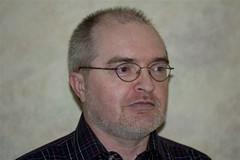
As we learned Thursday evening at David Rowe’s lecture Probing the Geometry of Space – Mathematics circa 1900 at EinsteinFest, one of the keenest debates of the period was between those we call intuitionists and formalists. If I understood correctly, the intuitionists believed that the symbols of mathematics are not merely human mental constructs, but derive from experiential data. The number 251, for example, is not something that we can recognize by virtue of having an experience of seeing two groups, one of 250 and one of 251 respectively, and thereby always recognizing the difference. This is true, on the other hand, when we see a group of 3, 4, or 5. We automatically recognize what 3, 4 or 5 looks like. These logically primitive associations then become, in the language of intuitionism, the basis upon which we construct symbols like 250 or 251. We don’t understand larger numbers intuitively, merely symbolically, unlike small numbers.
Obviously, I am no mathematician! But it occurred to me when listening to the lecture that, earlier in the week, I had an experience which dramatically illustrated how numbers intuitively mean very little to the common person unless dramatized in some way. When you link to the following dramatization, I would ask you to think not only about what 2000 looks like, but whether or not the binary implications of those who designed the presentation are justified.
What does 2000 look like? http://theunitedamerican.blogs.com/Movies/2000A/2000.html

No comments:
Post a Comment